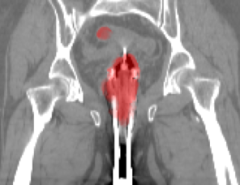OncoDynamics
Elevator Pitch: OncoDynamics revolutionizes cancer treatment by using advanced statistical modeling to predict and manage drug resistance. Our platform empowers oncologists and researchers to stay ahead of therapy challenges, enhancing the efficacy of cancer treatments and improving patient survival rates.
Concept
Advanced analytics platform for predicting and addressing drug resistance in cancer treatment.
Objective
To offer a predictive analytics tool that helps oncologists and pharmaceutical researchers understand and combat drug resistance in cancer therapy.
Solution
A software platform that uses a robust statistical framework based on multi-type branching processes to model tumor dynamics and predict drug-induced cell plasticity. This platform can analyze high throughput drug screening data to identify and mitigate therapy resistance.
Revenue Model
Subscription-based access for hospitals and research institutions, licensing fees for pharmaceutical companies, and pay-per-analysis for individual researchers.
Target Market
Hospitals, cancer research centers, pharmaceutical companies, and biotech firms focused on oncology.
Expansion Plan
Start with leading cancer research centers and hospitals, then expand to pharmaceutical companies. Future plans include integrating AI to enhance predictive accuracy and real-time monitoring capabilities.
Potential Challenges
Data privacy concerns, achieving high accuracy in diverse cancer types, and ensuring interoperability with existing medical systems.
Customer Problem
Current cancer therapies often fail due to undetected and unmanaged drug resistance, leading to tumor recurrence and reduced survival rates.
Regulatory and Ethical Issues
Comply with HIPAA for patient data, secure necessary approvals from bodies like the FDA for clinical tools, and ensure ethical use of data particularly in terms of AI model transparency.
Disruptiveness
It offers an innovative way to preemptively identify and counteract drug resistance, potentially transforming standard cancer treatment protocols and improving patient outcomes.
Check out our related research summary: here.



Leave a Reply